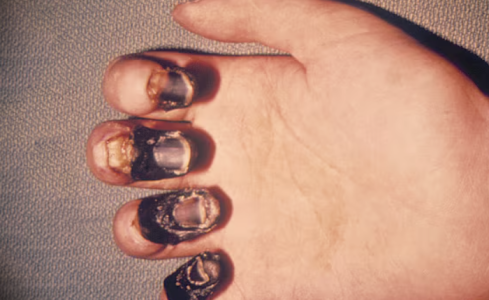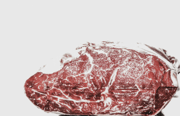What happens if you catch the plague? A rare US case sparks questions about the Black Death today
By
Veronica E.
- Replies 0
It sounds like something out of a history book—or a horror film—but a rare case of the plague has been confirmed in the United States.
Once known as the “Black Death” for the devastation it caused across Europe centuries ago, the plague still exists today,
though in very limited numbers.
The recent case, reported near Lake Tahoe, is a reminder that while modern medicine has tamed this once-deadly disease, it hasn’t disappeared completely.
Here at The GrayVine, we know many of our readers remember public health scares of the past and may be wondering: what really happens if someone catches the plague today?
And how worried should we be? Let’s take a closer look at the history, the symptoms, and the realities of this ancient illness in the modern world.

The plague—scientifically known as Yersinia pestis—was one of the deadliest diseases in history.
Between 1347 and 1351, it killed an estimated 25 to 50 million people in Europe, wiping out nearly a third of the population.
Thanks to antibiotics and modern medicine, the plague is no longer the death sentence it once was.
Still, small outbreaks occur every year in parts of Africa, Asia, South America, and rural areas of the United States.
Fewer than 20 cases are reported annually in this country, most often in the Southwest.
A recent widespread video simulation has shown how the bacteria attack the body after a flea bite:
Plague symptoms usually appear within a week of infection and may include:
Public health experts stress that the overall risk of plague in the United States is extremely low.
The key difference between now and the Middle Ages is that antibiotics make the disease treatable.
With prompt medical care, most people recover fully.
The patient near Lake Tahoe is currently recovering at home, and officials continue to monitor the situation to prevent further spread.
While the plague is no longer a widespread threat, it’s a powerful reminder of how quickly diseases can resurface.
It shows how far medicine has come—and why vigilance, public health monitoring, and quick access to treatment are so important.
Unlike centuries ago, we now have effective treatments.
Early use of antibiotics stops the disease from spreading and drastically lowers the risk of severe illness or death.
Read next: Are "Killer Bees" heading for your neighborhood? Here’s what you need to know to stay safe

Have you ever visited a place where the plague was once common? Do you remember past health scares that shaped the way communities responded to illness?
Share your thoughts in the comments—conversations like these help keep knowledge alive and reassure us that even history’s scariest diseases can be managed today.
Once known as the “Black Death” for the devastation it caused across Europe centuries ago, the plague still exists today,
though in very limited numbers.
The recent case, reported near Lake Tahoe, is a reminder that while modern medicine has tamed this once-deadly disease, it hasn’t disappeared completely.
Here at The GrayVine, we know many of our readers remember public health scares of the past and may be wondering: what really happens if someone catches the plague today?
And how worried should we be? Let’s take a closer look at the history, the symptoms, and the realities of this ancient illness in the modern world.

A rare plague case in the US: What it means and how it’s treated today. Image Source: YouTube / Gross Science.
A medieval killer in the modern age
The plague—scientifically known as Yersinia pestis—was one of the deadliest diseases in history.
Between 1347 and 1351, it killed an estimated 25 to 50 million people in Europe, wiping out nearly a third of the population.
Thanks to antibiotics and modern medicine, the plague is no longer the death sentence it once was.
Still, small outbreaks occur every year in parts of Africa, Asia, South America, and rural areas of the United States.
Fewer than 20 cases are reported annually in this country, most often in the Southwest.
Also read: Plague case reported in South Lake Tahoe sparks health advisory
What happens inside the body
A recent widespread video simulation has shown how the bacteria attack the body after a flea bite:
- The bite: An infected flea carrying Yersinia pestis transfers the bacteria into the bloodstream.
- Rapid spread: The bacteria multiply quickly and target the lymph nodes.
- Swollen lumps: The lymph nodes swell into painful bumps called buboes—giving the disease its name, bubonic plague.
- Skin changes: In severe cases, internal bleeding can cause the skin to darken or blacken.
- Complications: If untreated, the infection can spread to the lungs (pneumonic plague) or bloodstream (septicemic plague), both of which can be fatal without treatment.
Also read: What was meant to protect her, only led to more danger: How did this woman contract the "world's deadliest" virus?
Symptoms to watch for
Plague symptoms usually appear within a week of infection and may include:
- Sudden high fever and chills
- Headache and body aches
- Weakness and fatigue
- Nausea and vomiting
- Painful, swollen lymph nodes (buboes)
- In severe cases, difficulty breathing and blackened skin
Also read: Are you putting yourself at risk? Texas woman dies after using tap water for routine rinse
How worried should you be?
Public health experts stress that the overall risk of plague in the United States is extremely low.
The key difference between now and the Middle Ages is that antibiotics make the disease treatable.
With prompt medical care, most people recover fully.
The patient near Lake Tahoe is currently recovering at home, and officials continue to monitor the situation to prevent further spread.
Also read: Are you at risk? Deadly “bone-breaking” virus spreading across US states—here’s what you should know now
How it spreads
- Fleas: The most common source, after feeding on infected rodents.
- Animals: Squirrels, prairie dogs, and rats can carry the bacteria.
- Person-to-person: Rare, but possible in cases of pneumonic plague if someone coughs infected droplets.
Also read: The perils of a disease-carrying predator: Why this tiny creature is causing a stir
How to protect yourself
- Avoid contact with wild rodents and their burrows.
- Keep pets flea-free and prevent them from hunting small animals.
- Use insect repellent when camping or hiking in areas where plague is known to occur.
- Report sick or dead wildlife to local authorities.
Also read: Is your state next? NYC braces for a second highly contagious virus as cases surge nearby
Why the plague still matters
While the plague is no longer a widespread threat, it’s a powerful reminder of how quickly diseases can resurface.
It shows how far medicine has come—and why vigilance, public health monitoring, and quick access to treatment are so important.
Also read: Patients with ultra‑rare diseases fear new FDA rules may leave them without treatment
The good news: modern medicine works
Unlike centuries ago, we now have effective treatments.
Early use of antibiotics stops the disease from spreading and drastically lowers the risk of severe illness or death.
Read next: Are "Killer Bees" heading for your neighborhood? Here’s what you need to know to stay safe
Key Takeaways
- The plague, once known as the Black Death, still appears in rare cases worldwide, including fewer than 20 cases per year in the United States.
- Caused by Yersinia pestis and spread mainly through flea bites, the disease can cause fever, chills, weakness, and painful swollen lymph nodes called buboes.
- If untreated, it can progress to more serious forms (septicemic or pneumonic plague), but with antibiotics most people recover fully today.
- Prevention includes avoiding wild rodents, keeping pets flea-free, and using insect repellent in areas where plague may still exist.
Have you ever visited a place where the plague was once common? Do you remember past health scares that shaped the way communities responded to illness?
Share your thoughts in the comments—conversations like these help keep knowledge alive and reassure us that even history’s scariest diseases can be managed today.






